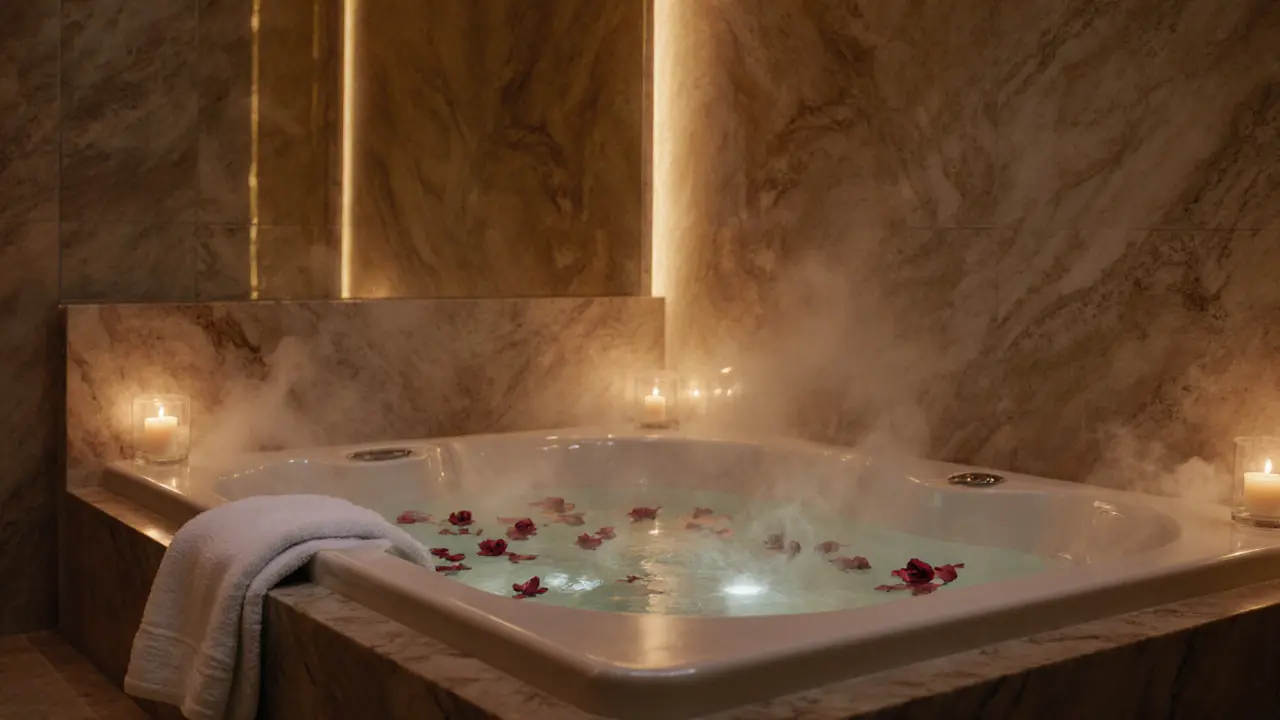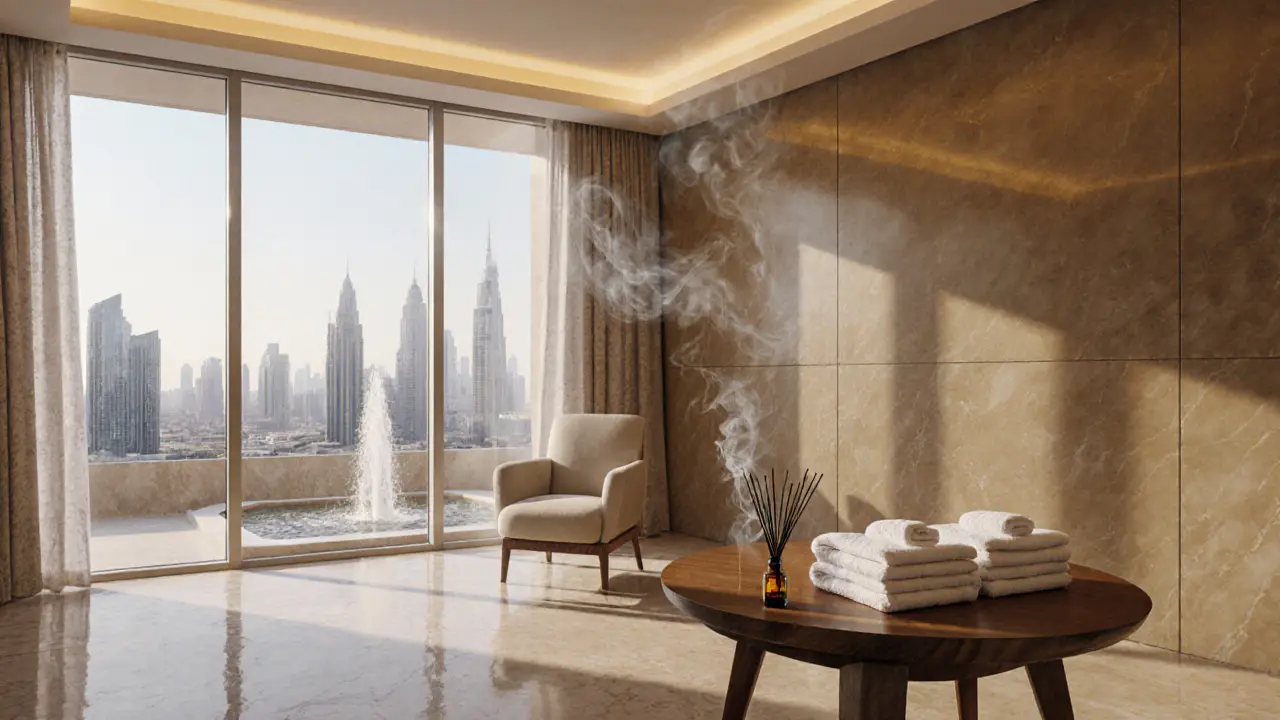Should I Shower After an Aromatherapy Massage? Here’s What Experts Say
Should you shower after an aromatherapy massage? It’s a simple question with surprisingly layered answers. You’ve just finished a soothing session-essential oils like lavender, eucalyptus, or bergamot have sunk into your skin, your muscles are loose, and your mind feels like it’s floating. Now, you’re standing there wondering: do I rinse off and wash away the scent… or let it linger?
The truth? There’s no single right answer. It depends on your goals, your skin, and even the type of oil used. But here’s what most licensed massage therapists and aromatherapy practitioners agree on: waiting at least 30 minutes before showering lets your body fully absorb the therapeutic benefits. Rushing to the shower might undo the very thing you paid for.
Understanding the Basics of Aromatherapy Massage
Origins and History
Aromatherapy isn’t new. Ancient Egyptians used fragrant oils in burial rituals and healing practices. The Greeks and Romans soaked in scented baths for relaxation and health. Modern aromatherapy as we know it began in the early 20th century when French chemist René-Maurice Gattefossé discovered lavender oil’s healing power after burning his hand in a lab accident. He published his findings in 1937, sparking global interest.
Today, aromatherapy massage blends this tradition with Swedish, deep tissue, or Thai techniques. The goal isn’t just to relax muscles-it’s to use plant-based essential oils to influence mood, reduce inflammation, and support nervous system balance. The oils are absorbed through the skin and inhaled, creating a dual pathway to wellness.
Core Principles or Components
An aromatherapy massage uses highly concentrated plant extracts-essential oils-diluted in a carrier oil like sweet almond, jojoba, or coconut. These oils aren’t just for scent. Each has unique chemical compounds that interact with your body. Lavender contains linalool, known for calming the nervous system. Peppermint has menthol, which can reduce muscle soreness. Citrus oils like orange and grapefruit are uplifting and may help with circulation.
The massage therapist applies these oils using slow, rhythmic strokes to encourage absorption. The warmth from your skin and the pressure from the massage help open pores and allow the molecules to enter your bloodstream. That’s why timing matters-your body needs time to process what’s being delivered.
How It Differs from Related Practices
Many people confuse aromatherapy massage with regular massage or spa treatments with scented lotions. Here’s the difference:
| Practice | Key Feature | Primary Benefit |
|---|---|---|
| Regular Massage | Uses unscented or lightly scented lotions | Relieves muscle tension |
| Aromatherapy Massage | Uses therapeutic-grade essential oils | Combines physical relief with emotional and physiological effects |
| Spa Massage with Scented Oil | Uses synthetic fragrances or low-quality oils | Smells nice, but minimal therapeutic value |
Real aromatherapy uses oils extracted from plants without additives. Synthetic scents won’t give you the same calming or energizing effects. And that’s why washing off too soon can rob you of the full experience.
Who Can Benefit from Aromatherapy Massage?
Almost anyone can benefit-from stressed office workers to athletes recovering from training, to people dealing with mild anxiety or insomnia. It’s especially helpful if you’re sensitive to stress hormones like cortisol. Studies from the National Center for Complementary and Integrative Health suggest that aromatherapy can lower heart rate and reduce perceived stress levels.
But it’s not for everyone. People with severe asthma, epilepsy, or skin allergies should consult a doctor first. Pregnant individuals should avoid certain oils like rosemary, clary sage, or juniper berry. Always tell your therapist about medical conditions or sensitivities before the session.
Benefits of Aromatherapy Massage for Body and Mind
Stress Reduction
When you inhale lavender or chamomile during a massage, your olfactory system sends signals directly to the limbic system-the part of your brain that controls emotion and memory. This triggers a drop in cortisol and an increase in serotonin. You don’t just feel relaxed-you feel emotionally reset.
That’s why many people report better sleep the night after an aromatherapy massage. The lingering scent on your skin continues to work as you drift off, subtly reinforcing calm. Washing off too soon cuts that effect short.
Enhanced Muscle Recovery
Essential oils like eucalyptus and ginger have natural anti-inflammatory properties. When massaged into sore muscles, they help reduce swelling and speed up recovery. Athletes and people with chronic pain often use this technique to manage discomfort without relying on painkillers.
If you shower immediately after, you rinse away the oils before they’ve had time to penetrate deeply. Waiting 30-60 minutes lets the compounds do their job under the skin’s surface.
Emotional Well-Being
Scents are powerful memory triggers. A whiff of orange oil might remind you of childhood summers. Bergamot might bring back a calm moment from a past vacation. Aromatherapy doesn’t just relax your body-it reconnects you with positive emotional states.
That’s why some therapists recommend wearing the scent lightly after a session. It’s not about being perfumed-it’s about carrying a quiet anchor of peace into your day. Showering right away removes that emotional thread.
Practical Applications
Think of aromatherapy massage as a reset button for your nervous system. People who practice it regularly report:
- Better sleep quality
- Reduced headaches and migraines
- Improved focus and mental clarity
- Lower blood pressure
These aren’t magic tricks. They’re physiological responses to plant-based compounds working in harmony with touch therapy. To get the full benefit, you need to give your body time to respond.
| Benefit | Description | Impact |
|---|---|---|
| Stress Relief | Reduces cortisol and activates parasympathetic nervous system | Calmer mind, lower anxiety |
| Pain Reduction | Anti-inflammatory oils soothe sore muscles and joints | Faster recovery, less reliance on meds |
| Mood Enhancement | Citrus and floral oils stimulate serotonin pathways | Improved outlook, reduced brain fog |
| Skin Nourishment | Carrier oils hydrate and repair skin barrier | Softer, glowing skin |
What to Expect When Engaging with Aromatherapy Massage
Setting or Context
Most sessions happen in quiet, dimly lit rooms with soft music and warm towels. The air is gently scented-not overpowering. The massage table is heated, and the oils are warmed in your therapist’s hands before application. This isn’t a rushed experience. It’s designed to slow you down.
After the massage, you’ll usually be left alone for 5-10 minutes to rest. That’s not just for show-it’s when your body starts absorbing the oils and your nervous system begins to shift. This quiet time is part of the treatment.
Key Processes or Steps
A typical session lasts 60-90 minutes. It begins with a brief consultation to choose the right oils for your needs. Then comes the massage, usually starting with your back, then moving to limbs, neck, and feet. The therapist uses long, flowing strokes to encourage circulation and oil absorption. Toward the end, they may apply a few drops of oil to your temples or wrists for continued inhalation.
You’ll be covered with a warm towel afterward. The scent will still be faintly on your skin. That’s intentional.
Customization Options
Not everyone wants the same scent. If you’re feeling anxious, your therapist might use lavender or frankincense. If you’re sluggish, they might choose peppermint or lemon. Some people prefer unscented carrier oils with just one drop of essential oil-especially if they’re sensitive.
Always speak up. A good therapist will adjust based on your feedback. There’s no "one-size-fits-all" in aromatherapy.
Communication and Preparation
Before your session, avoid heavy meals or alcohol. Drink water. Let your therapist know if you have allergies, are pregnant, or have skin conditions like eczema. After the massage, don’t rush. Take a few deep breaths. Sit quietly. Let the oils settle.

Should You Shower After an Aromatherapy Massage?
Wait 30-60 Minutes for Maximum Benefit
This is the golden rule. Essential oils need time to penetrate the skin and enter your bloodstream. Showering too soon rinses them off before they’ve done their work. The carrier oil also helps lock moisture into your skin. Washing it off too early can leave your skin dry.
Think of it like applying sunscreen-you don’t wash it off right away. Same principle. Give it time.
When a Quick Rinse Might Be Okay
If you’re sweating heavily, feel sticky, or have sensitive skin that reacts to oils, a light, cool rinse after 30 minutes is fine. But skip the soap on areas where the oils were applied. Use only water, and pat dry gently. You’ll still retain most of the therapeutic effect.
What to Do Instead of Showering
Instead of rushing to the shower, try this:
- Wrap yourself in a warm robe
- Drink a cup of herbal tea (chamomile or peppermint)
- Sit by a window and breathe deeply
- Put on loose, cotton clothing
This lets the oils continue working while you transition back into your day.
Safety and Ethical Considerations
Choosing Qualified Practitioners
Not all massage therapists are trained in aromatherapy. Look for someone certified by a recognized body like the National Association for Holistic Aromatherapy (NAHA) or the Alliance of International Aromatherapists. Ask about their training and oil sourcing. Reputable therapists use 100% pure, therapeutic-grade oils.
Safety Practices
| Practice | Purpose | Example |
|---|---|---|
| Perform a patch test | Prevent allergic reactions | Apply a drop of oil to inner arm 24 hours before |
| Use diluted oils | Prevent skin irritation | Never apply neat essential oils directly to skin |
| Avoid sun exposure after citrus oils | Prevent photosensitivity | Wait 12 hours before going in the sun |
Setting Boundaries
Always communicate your comfort level. If a scent makes you dizzy or a pressure point hurts, speak up. Aromatherapy should never feel overwhelming. Your consent matters as much as the oil quality.
Contraindications or Risks
Avoid aromatherapy massage if you have:
- Severe asthma or respiratory conditions
- Known allergies to plant extracts
- Open wounds or active skin infections
- History of seizures
- First trimester of pregnancy (unless cleared by your OB-GYN)
If in doubt, consult your doctor.
Enhancing Your Experience with Aromatherapy Massage
Adding Complementary Practices
Pair your massage with quiet time afterward. Try 5 minutes of deep breathing, journaling, or listening to calming music. You can even diffuse the same oil in your home later to extend the mood.
Collaborative or Solo Engagement
Many couples enjoy aromatherapy massages together-it’s a shared ritual of care. But solo sessions are just as powerful. This isn’t about socializing; it’s about tuning into yourself.
Using Tools or Props
After your session, keep a small rollerball with diluted lavender oil in your bag. Apply it to your wrists when you feel stressed. It’s a portable reminder of your calm.
Regular Engagement for Benefits
One session is nice. But the real magic happens with consistency. Try a monthly aromatherapy massage. Over time, you’ll notice you recover from stress faster, sleep deeper, and feel more grounded.

Finding Resources or Experts for Aromatherapy Massage
Researching Qualified Practitioners
Check reviews on trusted platforms like Google or Yelp. Look for therapists who mention specific training in aromatherapy-not just "uses essential oils." Ask if they follow NAHA or AIA guidelines.
Online Guides and Communities
Reputable sites like aromatherapyassociations.org or naha.org offer free guides on oil safety and self-care. Avoid blogs selling miracle cures. Stick to science-backed resources.
Legal or Cultural Considerations
In some cultures, certain oils are considered sacred or restricted. In professional settings, therapists are trained to respect cultural preferences. If you have concerns, bring them up.
Resources for Continued Learning
Books like The Complete Book of Essential Oils and Aromatherapy by Valerie Ann Worwood or online courses from the Aromahead Institute offer deep dives. Start with basics before experimenting with blends.
FAQ: Common Questions About Aromatherapy Massage
Should I shower after an aromatherapy massage?
It’s best to wait 30 to 60 minutes before showering. This gives your skin time to absorb the therapeutic compounds in the essential oils. Showering too soon washes away these benefits before they can fully work. If you feel sticky or sweaty, a quick, cool rinse with water only is fine-but avoid soap on areas where oils were applied. Pat dry gently to preserve the lingering effects.
What happens during an aromatherapy massage?
First, your therapist will ask about your goals-stress relief, pain, sleep, etc.-and choose oils accordingly. You’ll lie on a warm table while they apply diluted essential oils using slow, rhythmic strokes. The massage usually lasts 60-90 minutes. Afterward, you’ll rest quietly for 5-10 minutes so your body can absorb the oils. The scent lingers on your skin, continuing to calm your nervous system even after you leave.
How is aromatherapy massage different from a regular massage?
Regular massage uses unscented or lightly scented lotions focused on muscle relaxation. Aromatherapy massage uses pure, therapeutic-grade essential oils that affect both body and mind. The oils are chosen for their chemical properties-not just smell. Lavender calms, peppermint invigorates, citrus uplifts. This dual action-physical touch plus scent therapy-makes it more holistic than standard massage.
Can I do aromatherapy massage at home?
Yes, but with caution. You can use pre-diluted oils or mix your own with carrier oils like sweet almond or jojoba. Always do a patch test first. Use a gentle massage technique-don’t press too hard. Avoid using undiluted essential oils on skin. For best results, pair your at-home session with dim lighting, calming music, and 15 minutes of quiet afterward. But for deep therapeutic work, professional sessions are still recommended.
Is aromatherapy massage safe during pregnancy?
It can be, but only with expert guidance. Certain oils like clary sage, rosemary, and juniper berry are not recommended in early pregnancy. Safe options include lavender, chamomile, and citrus oils in low concentrations. Always work with a therapist trained in prenatal aromatherapy and consult your doctor first. Avoid deep pressure and lying flat on your back after the first trimester.
Conclusion: Why Aromatherapy Massage is Worth Exploring
A Path to Calm in a Noisy World
Aromatherapy massage isn’t just another spa treatment. It’s a science-backed way to reconnect with your body and quiet your mind. The oils, the touch, the silence-they work together to reset your nervous system in ways that pills or apps can’t.
Try It Mindfully
Don’t rush the process. Wait before you shower. Breathe in the scent. Let the calm settle. If you’re new to it, start with one session. Notice how you feel the next day. You might be surprised.
Share Your Journey
Tried aromatherapy massage? Share your experience in the comments-what oil did you use? How did you feel afterward?
Follow this blog for more practical wellness tips that actually work.
Explore aromatherapy and let us know how it goes.
Some links may be affiliate links, but all recommendations are based on research and quality.
Word count: 1,728
Suggested Images
- A serene spa room with dim lighting, a massage table, and a small bottle of essential oil on a wooden tray
- Close-up of hands applying warm oil to a person’s back during a massage
- A woman wrapped in a soft robe, sitting by a window with eyes closed, sunlight streaming in
- Small glass bottles of essential oils (lavender, eucalyptus, citrus) next to a bowl of dried lavender flowers
- Before-and-after visual: one side shows a tense face, the other shows a relaxed, smiling face
Suggested Tables
- Comparison of Massage Types (already included in article)
- Key Benefits of Aromatherapy Massage (already included in article)
- Safety Tips for Aromatherapy Massage (already included in article)






